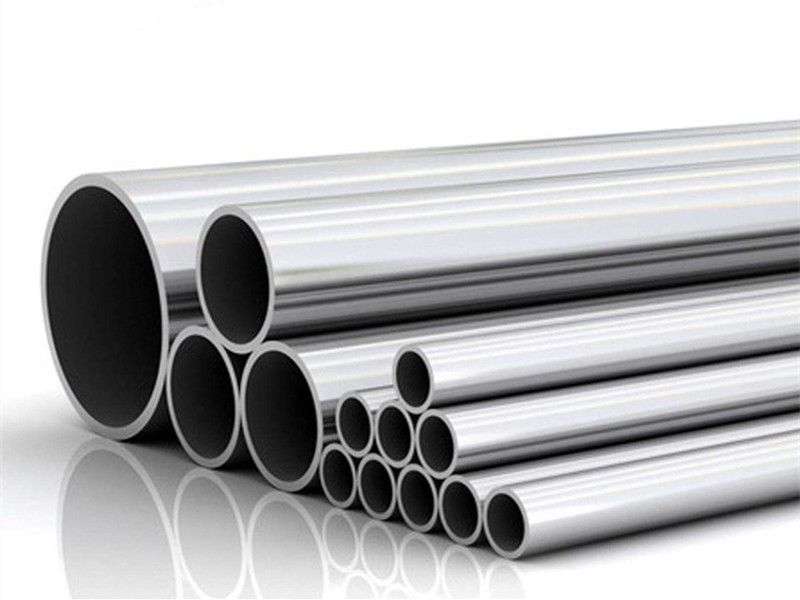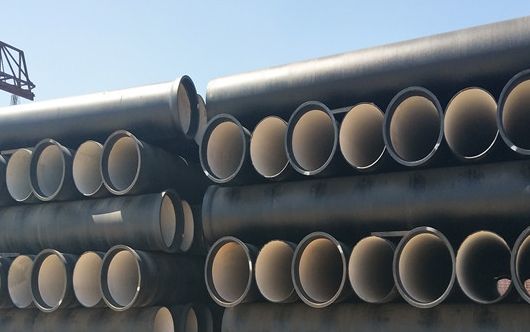Common building water supply and drainage pipes mainly include plastic pipes, metal pipes and composite pipes. But in fact, far beyond these categories, there are more new types of pipes. Here we will introduce the part 2 of Building Water Supply and Drainage Pipes to you. They are thin wall stainless steel pipe, Cast iron pipe for water supply, Other pipe materials including UPVC, PSP, Rigid PVC Silencing Tube, HDPE, PEX, PAP and PP-R.
6. Thin wall stainless steel pipe
With the development of national economy and the improvement of people's living standards, thin-walled stainless steel pipes and fittings have become the new trend of domestic water supply pipeline system. The thin-walled stainless steel pipe meeting the health requirements will not cause secondary pollution to the water quality and meet the requirements of the national direct drinking water quality standard.

The thin-walled stainless steel pipe is a kind of water pipe that can be completely recycled. It will not leave the garbage that can't be treated for the grandchildren.
The strength of thin-walled stainless steel pipe material is higher than that of all water pipe materials, which greatly reduces the possibility of water leakage caused by external force and saves a lot of water resources.
The thin-walled stainless steel pipe has excellent corrosion resistance. It will not scale during long-term use. The inner wall is smooth and clean, the transportation energy is low, and the cost is saved. It is the lowest transportation cost water pipe material.
The heat preservation performance of the thin-walled stainless steel pipe is 24 times that of the copper water pipe, which greatly saves the geothermal energy loss in the hot water transportation.
The thin-walled stainless steel tube will not pollute high-end sanitary ware. It avoids the non-scrubbing "red mark" and "blue mark" on the sanitary ware.
In the field of thin-walled stainless steel water supply pipes and fittings, the main difference between related similar products is the difference in connection methods, so the following introduces one of the most common and convenient thin-walled.
The connection method of stainless steel water supply pipes and pipe fittings-compression connection. It is a connection method that connects pipes with socket pipe fittings with sealing ring, and presses the pipe mouth with special tools to seal and tighten the pipe. The basic composition of the compression-type pipe fitting is a special-shaped pipe fitting with an O-ring seal in the U-shaped groove at the end. When assembling. Insert the stainless steel water pipe into the pipe fittings, and seal the pressure with a special pressure sealing tool. The pipe fittings and pipes in the sealing part are squeezed into a hexagonal shape to form sufficient connection strength. At the same time, the sealing effect is produced due to the compression deformation of the sealing ring. The cost of pipe fittings is low, suitable for promotion in the civil market, and the surface installation project is simple to install and the construction speed is fast.
7. Cast iron pipe for water supply
The water supply cast iron pipe has the advantages of strong corrosion resistance, convenient connection and installation, long service life (generally the service life of underground cast iron pipe is more than 60 years) and low price. It is mostly used in water supply pipes with DN greater than or equal to 75 grams, especially for underground laying. Its disadvantages are brittle, large quality, small length and poor strength than steel pipe. There are three kinds of direct pipes of water supply cast iron produced in China, which are low pressure, common pressure and high pressure.

In recent years, ductile iron pipe has been designed as the main riser in large high-rise buildings and applied to indoor water supply system. Compared with ordinary cast iron pipe, the wall of ductile iron pipe is thin and high strength. Its impact performance is more than 10 times of that of gray cast iron pipe. The ductile iron pipe adopts rubber ring mechanical interface or socket joint, and can also be connected by threaded flange.
Other Pipe Materials
Rigid polyvinyl chloride pipe (UPVC)
In the world, unplasticized polyvinyl chloride pipe (UPVC) is the most consumed variety among various plastic pipes. The use of this kind of pipe can positively alleviate the situation of steel shortage and energy shortage in my country, and the economic benefits are significant.
Main Feature:
- Good chemical corrosion and no rust
- The inner wall is smooth, and the fluid conveying capacity is 43.7% higher than that of cast iron pipes
- Low price
- Light weight, easy to flared, bond, bend and weld
Main application areas: building water supply and drainage piping system, building rainwater system
Core layer foam pipe (PSP)
The core layer foamed pipe is a new type of pipe with the inner and outer two layers produced by the three-layer co-extrusion process, which are the same as ordinary UPVC, and the middle is a low foam layer with a relative density of 0.7-0.9. In the structure, the foam core layer with energy absorption and sound insulation effect is used in the principle of type I structure in material mechanics.
Main Feature:
- Compared with solid wall pipes, it can save more than 25% of raw materials. The larger the diameter, the more raw materials can be saved.
- The foamed core layer greatly improves the compression resistance of the inner wall.
- The foamed core layer can effectively block noise transmission, which is more conducive to the drainage system of high-rise buildings.
- The impact strength is significantly improved: its circumferential rigidity is 8 times that of ordinary UPVC pipes
Main application fields: drainage system of civil buildings; Industrial protection and liquid delivery; Micro hole irrigation and drainage irrigation.
Rigid PVC Silencing Tube
The inner wall of the UPVC muffler pipe has six triangular convex spiral lines, so that the sewage flows freely and continuously along the inner wall of the pipe in a spiral shape. The unique structure of the muffler pipe allows the air to form an air column in the center of the pipe to be directly discharged. And there is no need to install a special vent pipe. Silencer pipes increase the drainage and ventilation capacity of high-rise buildings by 10 times, and increase the drainage capacity by 6 times. The noise is 30-40Db lower than ordinary UPVC drainage pipes and cast iron pipes.
Application field: Mainly used in drainage piping system, especially high-rise building drainage piping system.
High Density Polyethylene Pipe (HDPE)
High-density polyethylene pipe is valued by the pipeline industry for its excellent chemical properties, toughness, wear resistance, low price and installation cost. It is second only to polyvinyl chloride and the second largest plastic pipe material in use.
HDPE double-wall corrugated pipe is a kind of pipe with low material consumption, high rigidity, excellent flexibility, corrugated outer wall and smooth inner wall. Compared with ordinary pipes of the same specification and strength, the double-wall pipe can save 40% of the material. It has the characteristics of high impact resistance and high compression resistance, and it has developed rapidly.
Application areas: Widely used as drainage pipes, sewage pipes, underground cable pipes, agricultural irrigation and drainage pipes.
Cross-linked polyethylene pipe (PEX)
Cross-linked polyethylene pipe is regarded as a new generation of green pipe due to its good hygiene and comprehensive mechanical and physical properties.
Main features:
- No rust, good chemical corrosion resistance.
- Solid texture and high resistance to internal pressure.
- The tension of the inner wall of the pipe is low, which can effectively prevent scale.
- The pipe has smooth inner wall, low flow resistance and excellent hydraulic characteristics.
Application field: it can be used in building cold and hot water and drinking water pipeline system.
Aluminum composite pipe (PAP)
Aluminum-plastic composite pipe (PAP) is a new type of pipe that integrates the advantages of metal and plastic.
Main application areas: pipes for tap water, heating and drinking water supply systems.
The outer wall and the inner wall are chemically cross-linked polyethylene, and a layer of about 0.3mm thin aluminum welded pipe is in the middle. A layer of adhesive is firmly bonded between the aluminum pipe and the inner and outer layers of polyethylene;
Main features: corrosion resistance, small flow resistance, good barrier properties, high density, easy installation.
Random copolymer polypropylene pipe (PP-R)
Random copolymer polypropylene pipe is a new type of plastic pipe product recently developed in Europe. The raw material of PP-R is polyolefin, and its molecule contains only carbon and hydrogen elements, which is non-toxic and has reliable hygienic performance.
PP-R will not adversely affect the human body and the environment in the whole process of raw material production, product processing, use and disposal. It becomes a green building material of the same generation as cross-linked polyethylene pipes.
In addition to the advantages of general plastic pipes such as light weight, good strength, corrosion resistance, and long service life. PP-R pipes also have the following characteristics: good heat-resistance and heat preservation elasticity, good anti-freezing and environmental protection performance, large linear expansion coefficient which is 0.14- 0.16mm/mk. Mainly used: public and civil buildings are used to transport cold and hot water and heating systems.